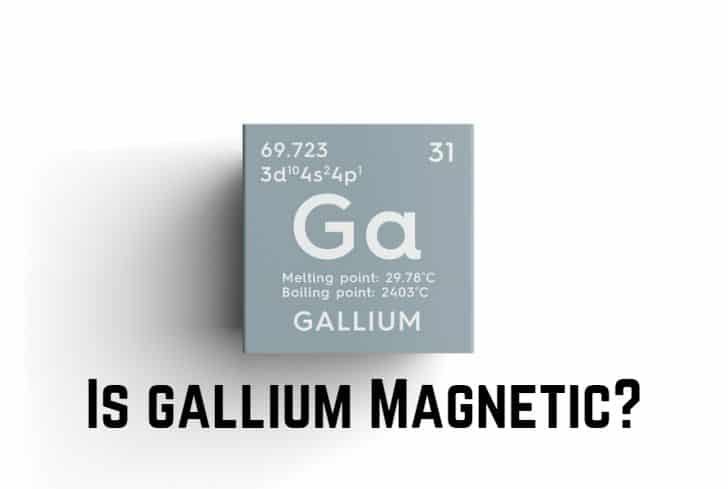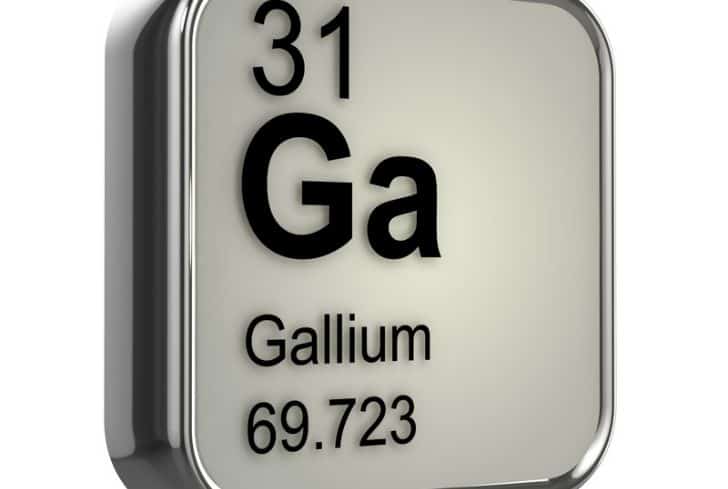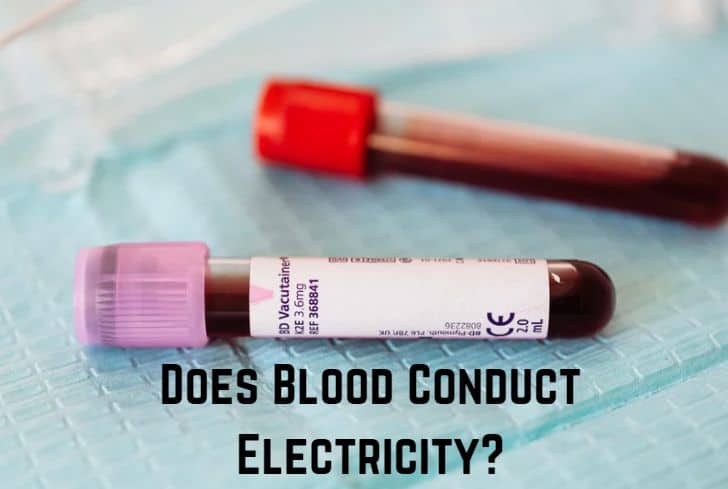Is Gallium Magnetic? (Answered)

Gallium (Ga) is a chemical element having the atomic number 31. It belongs to group 13 of the periodic table and behaves similarly to the other metals of the group (aluminum, indium, and thallium). Gallium was first discovered in by Paul-Emile Boisbaudran in 1875, and today it is widely used in electrical products.
Have you ever wondered if gallium is magnetic? In this article, we are going to discuss just that. We will begin with the properties of gallium. Then we will look at the magnetic properties of gallium and its compounds. Finally, we will talk about gallium’s significance in electronics.
Read: Is Pewter Magnetic?
Is Gallium Magnetic?
No, gallium is not magnetic in its solid state. While it does have an unpaired electron in its outer shell, its metallic bond is overlapped, so it ultimately becomes diamagnetic. However, in its liquid state, gallium can be magnetic.
Let us first try to learn what magnetism is. Magnetism is a force caused by the motion of electric charges. Every substance is made up of atoms. These atoms have electrons (particles that carry an electric charge) that circle the atom’s centre, called the nucleus.
In most substances, equal numbers of electrons spin in opposite directions. This cancels out their magnetism, and so they are said to be diamagnetic—they a repelled by a magnetic field. These include things like paper, cloth, wood, etc.
However, in some substances like iron, the electrons spin in the same direction. This allows their magnetic fields to combine and produces a magnetic field extending beyond the atoms. These objects are strongly magnetic.
Galium does have an unpaired electron in its outer shell. However, the metallic bond associated with the valence electrons is overlapped. This happens in such a way that the unpaired electrons get involved in some degree of pairing. This is why galium is diamagnetic.
However, scientists have recently discovered that in its liquid state, gallium can be magnetic. Some liquid metals that appear to be non-magnetic (like mercury, gallium, and lead) contain magnetic moments that appear and disappear for extremely brief periods.
What happens is that in the liquid state, the atoms approach each other very closely. This often causes an electron to be ejected from a filled outer shell, resulting in an atom having an unpaired electron. And, as we discussed earlier, unpaired electrons lead to magnetism. You can read more about this insightful study on PhysicsWorld.
Properties of Gallium
These are the properties of gallium:
- Appearance & Physical States: In its solid state, pure gallium has a beautiful silvery appearance, although it usually gets a bluish tinge due to superficial oxidation. It has an orthorhombic crystalline structure, and it breaks conchoidally when force is applied. Gallium is soft enough to be cut with a knife. It is solid at room temperature, but like mercury, it becomes liquid when heated slightly.
- Melting Point: Gallium has a melting point of 302 K (29°C or 85°F), so it melts in a person’s hand as the normal body temperature is 98.6 °F (37°C). Gallium is a temperature reference point and is used in thermometers as a non-toxic and environmentally-friendly substitute for mercury; it can also withstand higher temperatures the latter. Gallium expands upon solidification, and it also readily supercools.
- Amphoteric: Gallium is amphoteric, meaning that it reacts either as a base or an acid, depending on the situation. Gallium is stable in air and water, but it reacts with and dissolves in both acids and alkalis. It reacts with sodium and potassium hydroxide solutions to yield a gallate and hydrogen gas.
- Chemical Behaviour: In most compounds, gallium has an oxidation state of +3, and sometimes, +1 (as in the oxide, Ga2O). The dihalides contain Ga+ and Ga3+ in a one-to-one ratio. Gallium reacts with group 13 elements like aluminium and idiom to form compounds that have significant semiconductor and optoelectronic properties. Some of these are used in transistors while others create light-emitting diodes.
- Formation: In nature, gallium does not occur as a free element or concentrated in independent minerals, except for gallite (CuGaS2), which is rare & economically insignificant. Instead, gallium (III) compounds are found in trace amounts in bauxite and zinc ores (like sphalerite), from where it is extracted as a by-product.
Check out this fun video by Dave Hax to see how gallium behaves.
Read: Is Wood Magnetic?
What is the Magnetic Permeability of Gallium?
The magnetic permeability of gallium is estimated to be 0.80×10-6 H/m. In most cases, the magnetic permeability of gallium is higher because of its paramagnetic nature. Liquid gallium also conducts electricity better than solid gallium.
Magnetic permeability is the measure of magnetization that a material obtains in response to an applied magnetic field. In its solid state, gallium is diamagnetic.
However, in its liquid state, gallium has brief “magnetic moments” due to cage diffusion. This is why liquid gallium has greater magnetic permeability than solid gallium.
Is Gallium Paramagnetic or Diamagnetic?
Gallium is diamagnetic in its solid state, meaning that it is repelled by a magnetic field. However, a recent study by Wouter Montfrooij and his colleagues at the University of Missouri has discovered that gallium has “magnetic moments” in its liquid state.
In its solid state, gallium is diamagnetic. While it does have an unpaired electron, its magnetic field is overlapped. However, in its liquid state, gallium becomes paramagnetic.
Montfrooij and his colleagues have explained this through a phenomenon called cage diffusion. Cage diffusion occurs when an atom in a liquid bounces off neighboring atoms and becomes confined in a “cage”.
In the liquid state, the atoms approach each other very closely, which can result in an electron getting ejected from a filled inner shell. This leads to an unpaired electron, which causes magnetism. The magnetic moment appears and disappears at the same as the ion “rattles around” in the cage formed by its neighbors.

Is Gallium Phosphide Magnetic?
No, gallium phosphide is a diamagnetic material. It is an odorless compound that serves as an excellent semiconductor. Gallium phosphide has negative magnetic permeability. However, when it is doped with manganese, it becomes magnetic.
Gallium phosphide (GaP) has three valence gallium electrons bonded with five phosphorous valence electrons. This creates a zinc blende cubic structure with each atom at the centre of the tetrahedron, resulting in diamagnetism.
Gallium phosphide has a magnetic susceptibility of -13.8×10-6 cgs. However, when gallium phosphide is doped with 3% manganese, it exhibits ferromagnetism.
Is Gallium Antimonide Magnetic?
No, gallium antimonide is non-magnetic. It is a semi-conducting compound of gallium and antimony with a band gap of 0.67 eV. While gallium antimonide is non-magnetic, it becomes magnetic when doped with iron or manganese.
Gallium antimonide (GaSb) is a semiconductor that is used in infrared detectors & LEDs, lasers, and transistors. Gallium antimonide is non-magnetic in itself.
However, when it is doped with iron or manganese it becomes magnetic. With iron or manganese, there occurs vacancy in gallium antimonide, which induces magnetization in the presence of a strong magnetic field. Such a material exhibits high magnetic susceptibility.
Is Gallium Flammable?
No, gallium is not flammable. But, while gallium itself may not burn, heat can cause it to react and produce corrosive or toxic fumes. Runoff gallium can also pollute waterways.
Gallium is a non-toxic and environment-friendly substance, which is why it is often used as an alternative to mercury. It is stable in air and water.
Gallium is not flammable, so it will not burn. However, excessive heat can cause it to produce corrosive or toxic fumes. Runoff gallium can also pollute waterways.
Does Gallium Conduct Electricity?
Yes, gallium conducts electricity. However, it is a semiconductor, so it is not as conductive as a metal. Yet this property (along with its flexibility) is what makes gallium so significant for the electronics industry, where it is used to create a wide range of products.
The primary compound of gallium that is used in electronics is gallium arsenide; it is used in microwave circuits, infrared circuits, and high-speed switching circuits. Semiconducting compounds like gallium nitride and indium gallium nitride create blue/violet light-emitting diodes and diode lasers.
Gallium is used in solid-state devices like transistors and rectifiers. Gallium nitride nanowires have also been used in electronic and optoelectronic nanosystems, which are extremely small electronic devices that operate via light.
Because of its unusual flexibility, scientists are discovering new ways of using gallium. Human bodies are soft and flexible, unlike electronics. But with gallium, it may be possible to create devices that can stretch and bend.
Read: Is 14k Gold Magnetic?
For example, gallium can be shaped into thin wires that run between plastic or rubber sheets, creating a bendable circuit. These wires can connect tiny electronic devices like a computer chip. Such a device can then be wrapped around an athlete’s arm to track their motion or other vital signs.
Conclusion
In this article, we have looked at the magnetism of gallium. Gallium is a diamagnetic element, meaning that it is repelled by a magnetic field. However, as scientists recently discovered, it can be magnetic in its liquid state. We looked at the properties of gallium and some of its uses. Then we went into detail about its magnetic properties. Finally, we talked about the role of gallium in electronics.






